Metronome
About
Metronome is a mobile app that uses rhythmic vibrations to align walking movements for patients with Parkinson’s Disease by using beat induction. The app aims to improve gross and fine motor control for early stage Parkinson’s patients by synchronizing movements to a perceived rhythm through music therapy, specifically beats and vibrations. This app was developed with a team of six students for a startup competition in our IEOR 186: Product Management Essentials course, in which my role was the team's sole designer. Out of the 8 teams in the course, Metronome won the "People’s Choice Award" in our final pitch to a panel of product managers from Chegg.
What's the Problem?
Parkinson’s Disease is a progressive nervous system disorder linked to low dopamine production which causes tremors, rigidity, impaired balance and shuffling walking patterns. There are over 1 million patients with Parkinson’s Disease in the United States alone. Each year, there are approximately 60,000 new diagnoses of Parkinson’s disease. Our competitive analysis shows that there are limited treatment options in improving gait in Parkinson’s patients outside of prescription medicine, stem cell treatment, and deep brain stimulation. Canes and walkers are also used to improve shuffling, however they are limited in their effectiveness towards improving overall gait.
Initial Research
The objective of Metronome is to give Parkinson’s patients an extended period of independence that allows them to maintain their lifestyles as long as possible. The effectiveness of music therapy, such as rhythmic somatosensory auditory cueing, has been validated by the medical research community, however, there is limited research on the use of music therapy in technology with Parkinson’s patients in particular. With this knowledge in mind, one of my partners and I spoke with actual Parkinson’s patients and doctors in the community to better understand the nature of the disease and the lifestyles of the patients. Due to HIPAA Privacy Rules, it’s difficult to reach out to patients and doctors regarding the specifics of medical cases, so we compromised by finding alternative resources such as clinics, support groups and academic doctors to interview. After initial user research, we concluded that our mobile app should focus on assisting the gait improvement of early-stage Parkinson’s patients. This led to our target user group to be Parkinson’s patients between the ages of 40 to 60 years old, that are in the early stages of having walking difficulty.
Low-Fidelity Mockups
Usability Testing
After initial user interviews, I went into designing the first iteration with the objective to create the simplest app for older individuals with low technical savvy to use. After conducting usability testing with our patients, we realized that our objective resulted in the mobile app becoming "too simple" to use, to the point where users did not fully understand the app’s purpose. Another issue that we discovered through feedback was the failure to account for the severity of hand tremors in early-stage Parkinson’s patients. User testing also revealed that the scroll mechanism to select BPM could serve as an obstacle for some patients.
High-Fidelity Mockups
In response to the feedback our team collected from both patients and doctors, I redesigned the app to bridge the shortcomings of the earlier iteration. By providing a tutorial upon initial launch of the app, users are able to better understand what they are supposed to do with the app. The new redesign also features a more engaging and colorful user interface that still supports usability for Parkinson’s patients. The scroll feature was replaced by an easier numeric input for the designated BPM. In this final iteration we upgraded the beeping sound with just a physical vibration to provide further discretion to the patient.
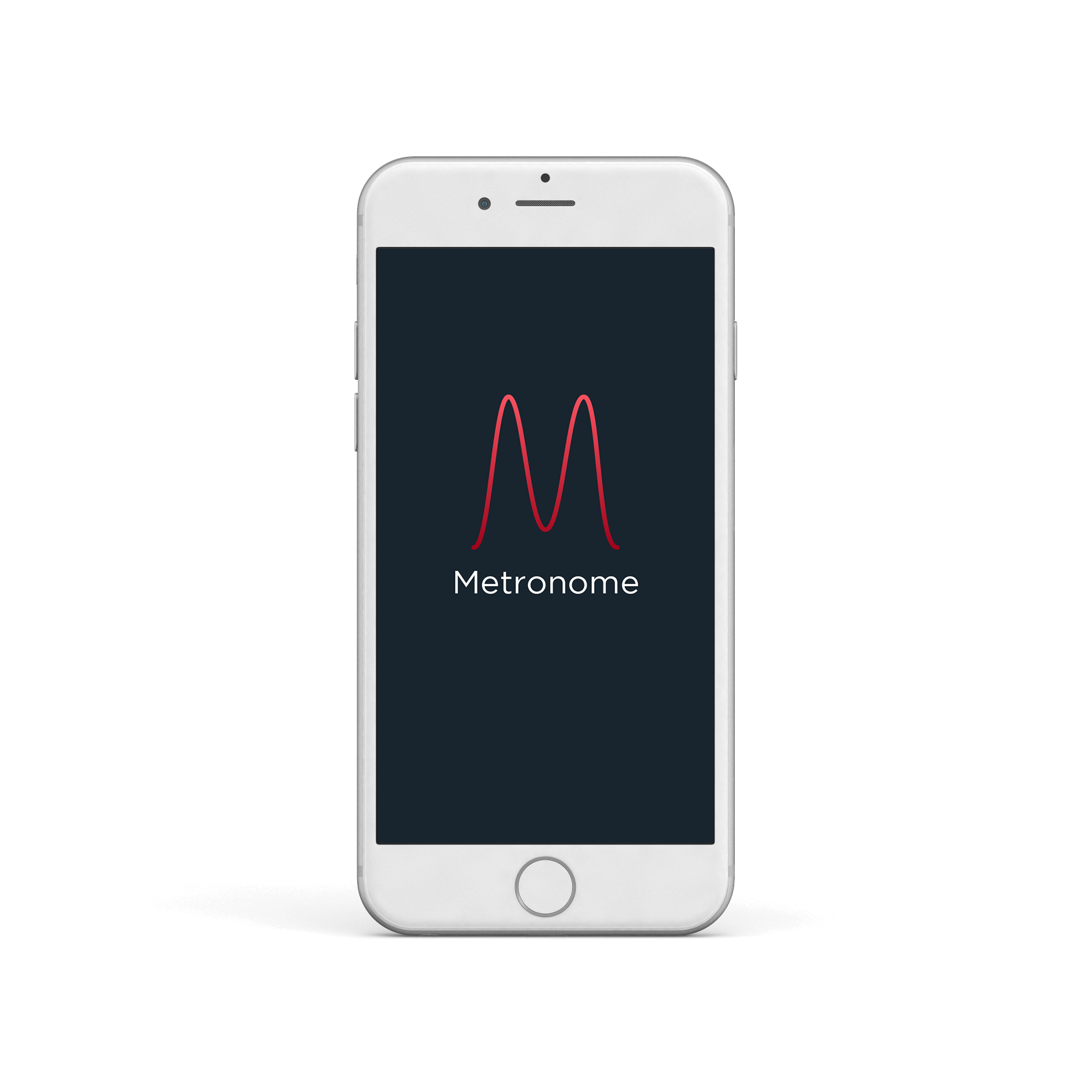


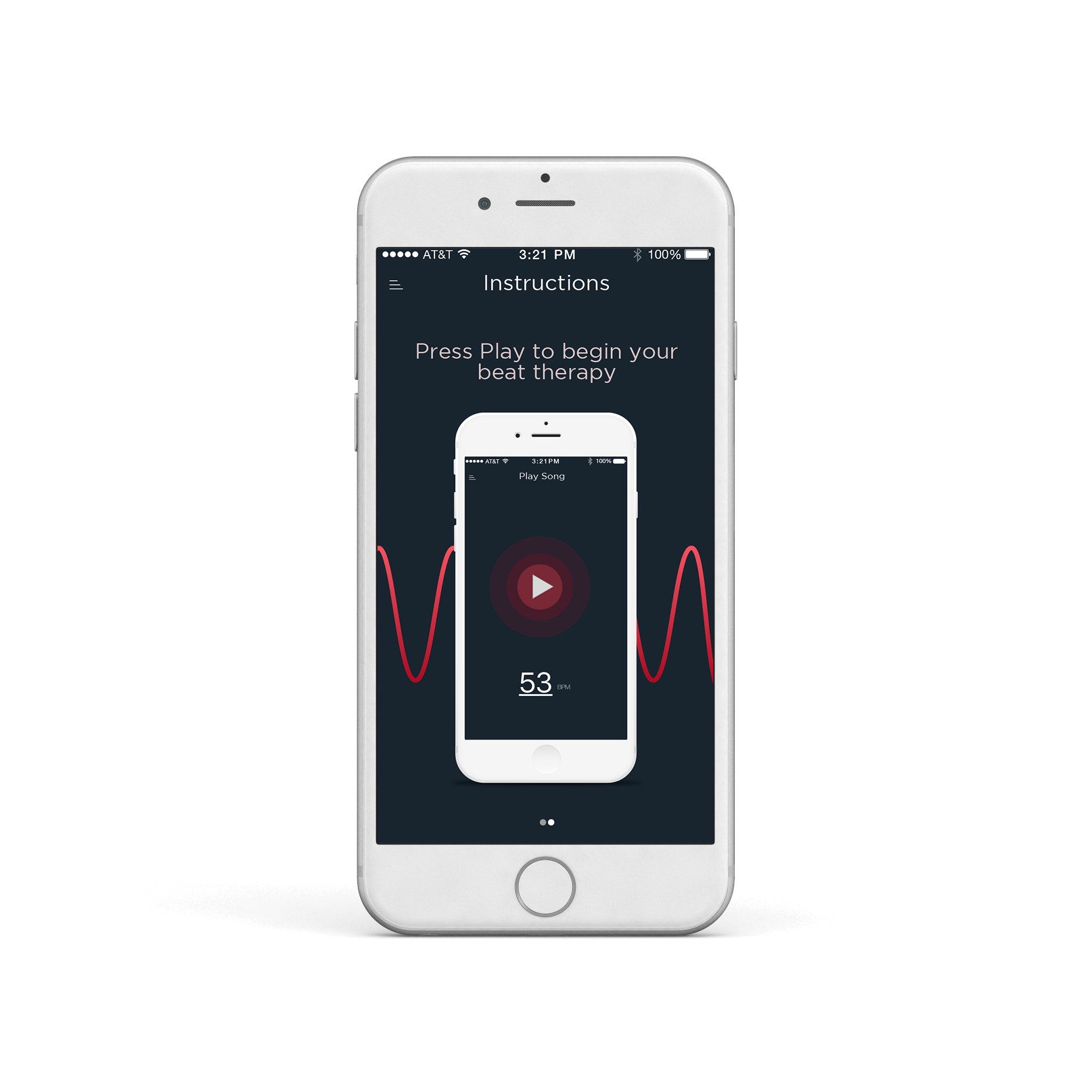
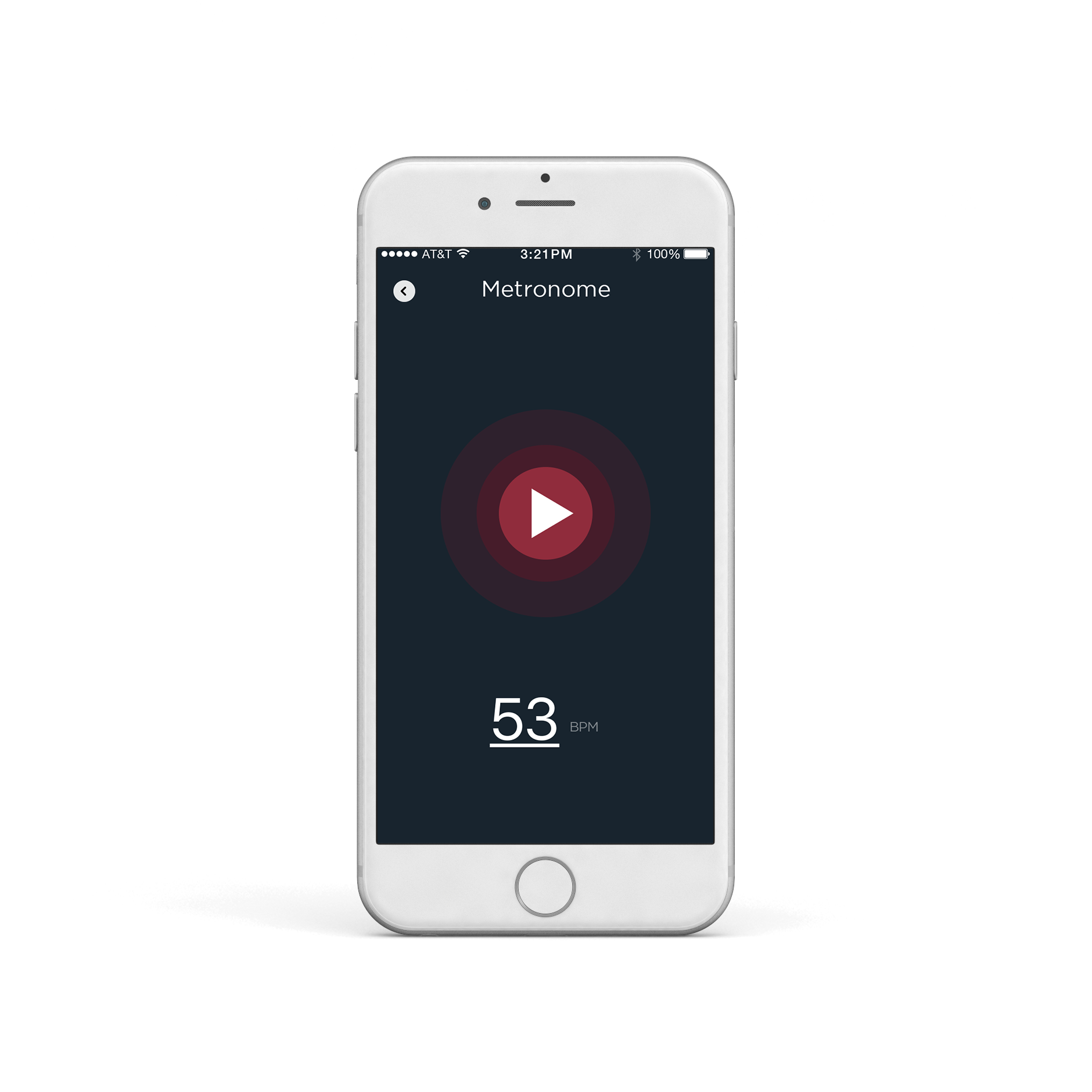
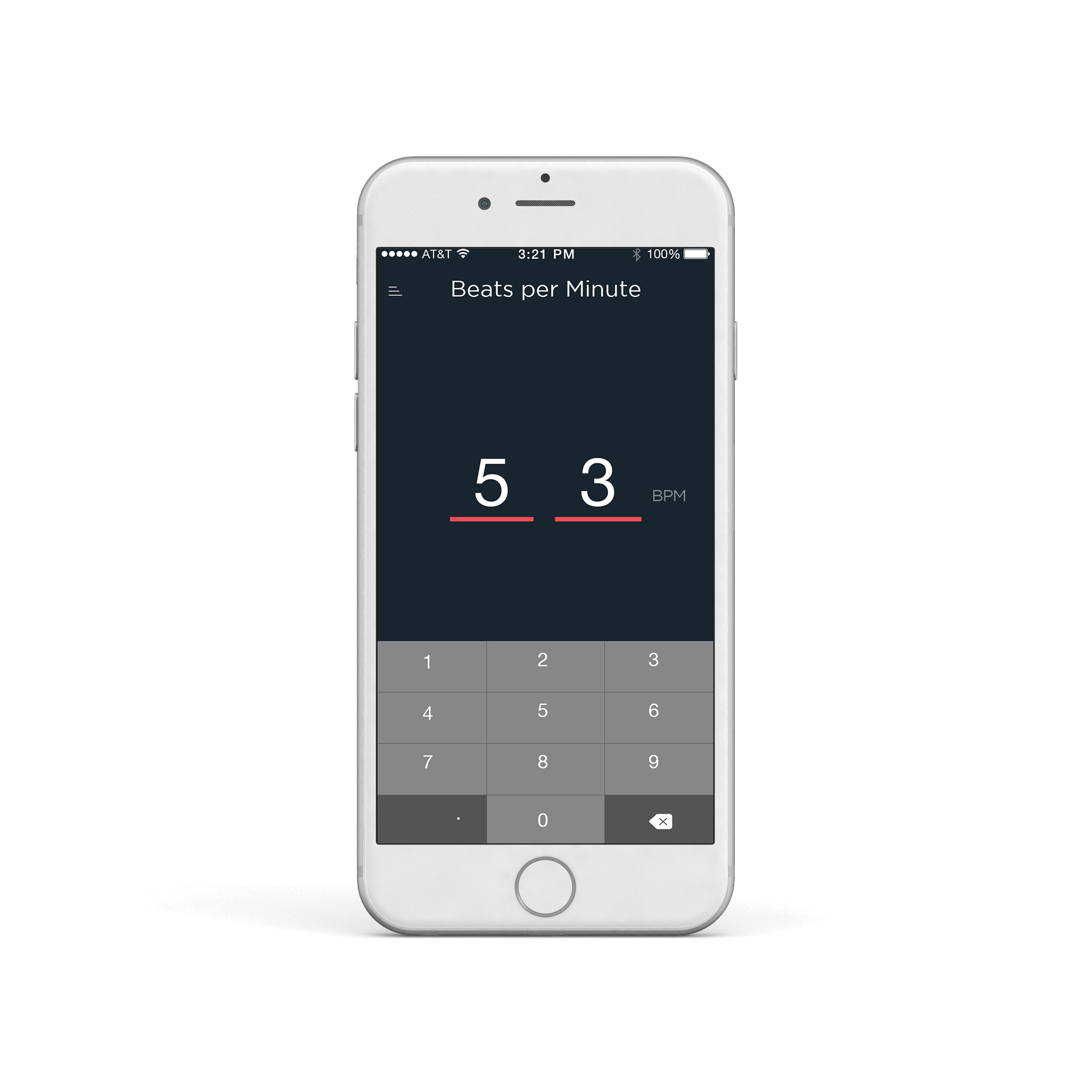
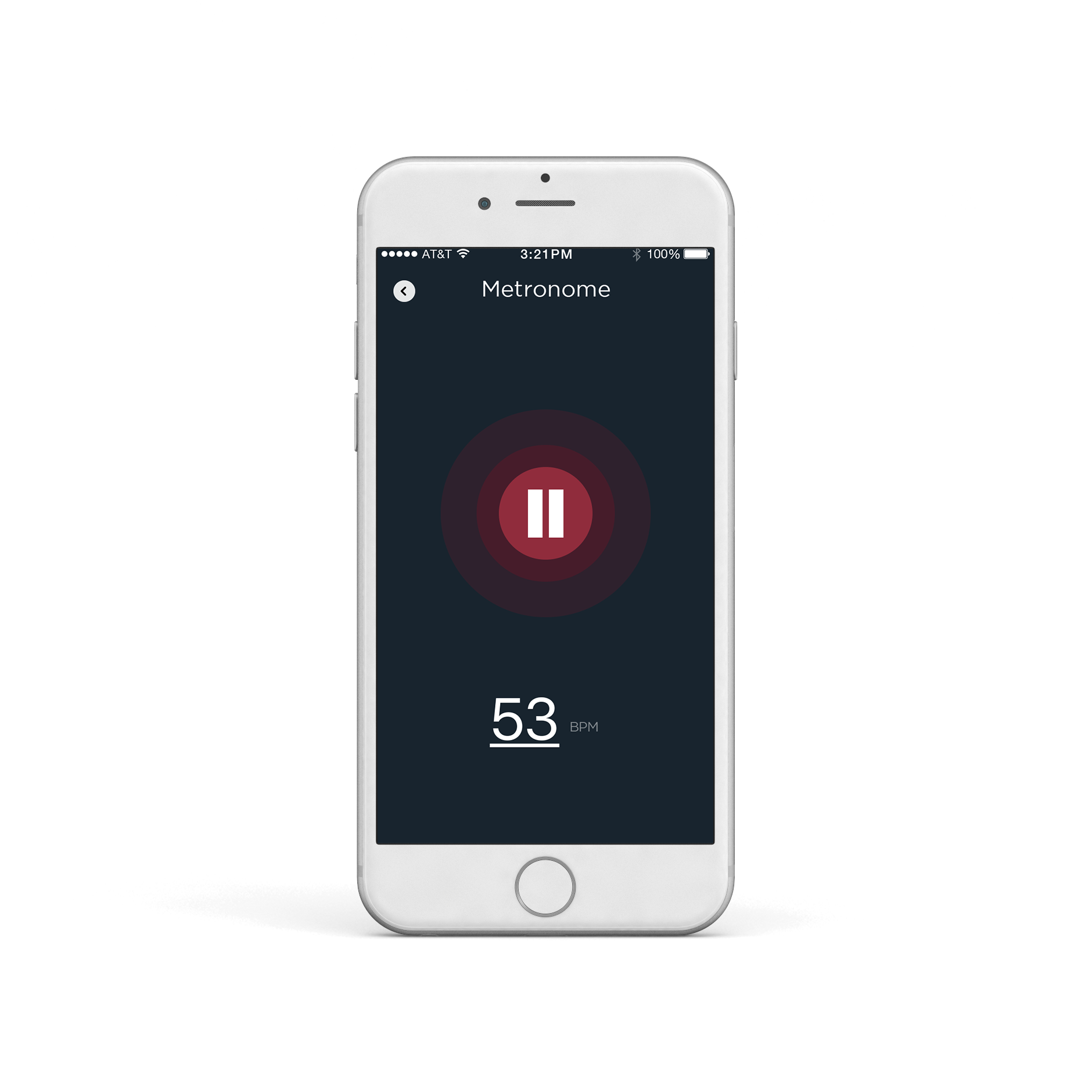
The Future
In the future, the team would like to move forward and take this app to the next level by developing hardware for the patients to wear. With further research and user feedback, we would like to create a “virtual cane” for early stage Parkinson’s patients that would lie on a user’s wrist like an Apple Watch or a Fitbit.






